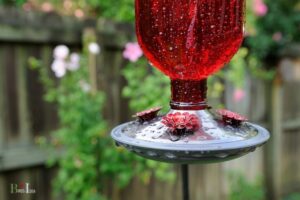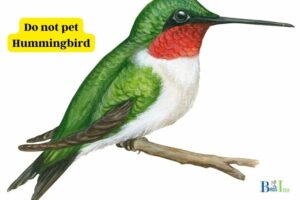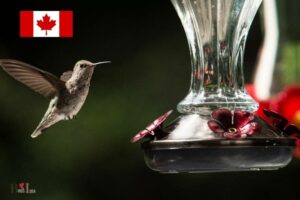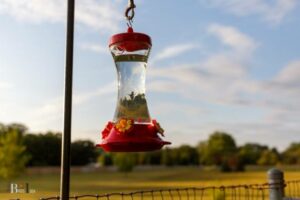How to Attract Hummingbirds to Your Balcony? Explore!
To attract hummingbirds to your balcony, you should provide a combination of natural food sources, water, shelter, and nesting materials.
Start by hanging a brightly colored feeder filled with sugar water. Plant nectar-rich flowers in pots or window boxes, such as petunias, fuchsias, or bee balm, which can thrive in small spaces.
Hummingbirds are attracted to areas where they can easily find food, water, and shelter.
Here’s a breakdown of what can be done to attract these birds to a balcony:
A simple example of this would be a balcony garden that includes red or purple petunias, a small hummingbird feeder, and a water dish positioned safely away from predators.
Creating a hummingbird-friendly environment on your balcony can offer a delightful spectacle of
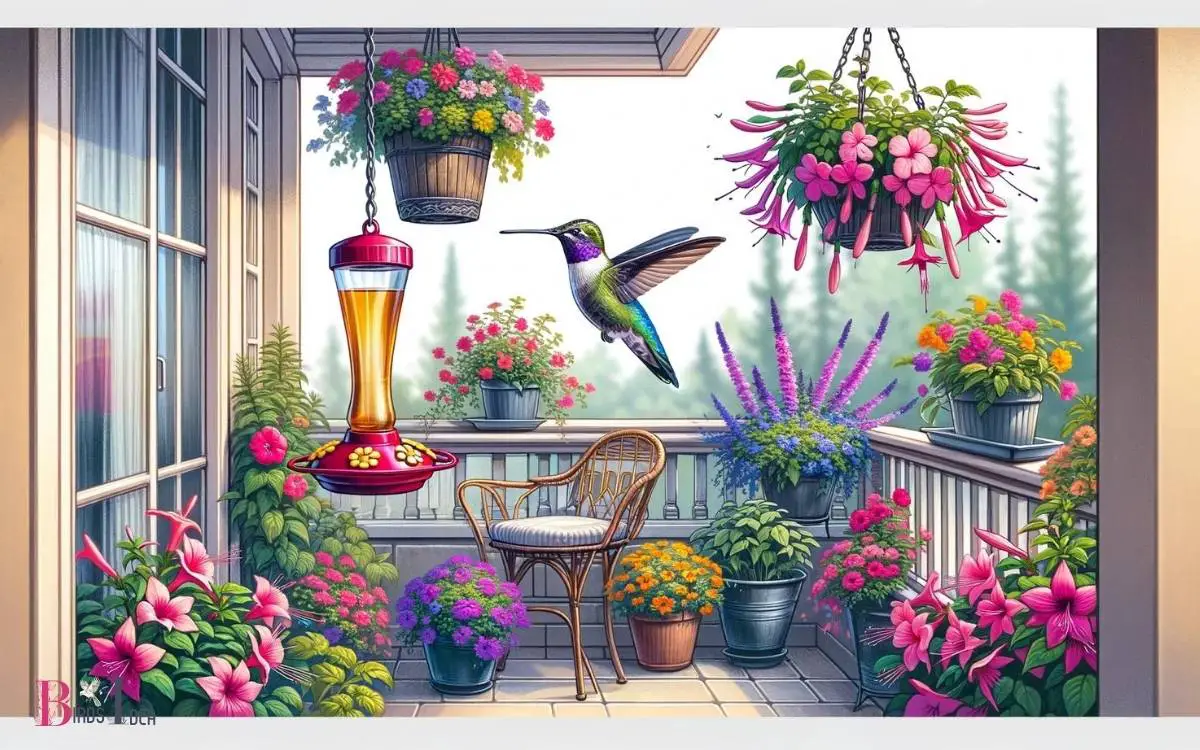
Key Takeaway
Choosing the Right Flowers
Hummingbirds are attracted to brightly colored, tubular flowers that provide ample nectar for their high-energy needs. They have a special affinity for red, orange, and pink flowers, although they will also visit other brightly colored blooms.
Some popular flower choices include bee balm, salvia, trumpet vine, and fuchsia. These flowers not only provide the necessary nectar but also offer a convenient perching spot for the tiny birds.
It’s important to select a variety of flowers that bloom at different times throughout the growing season to ensure a constant nectar supply.
Additionally, planting native flowers can attract a wider variety of hummingbird species. Understanding the specific flowers that hummingbirds are drawn to is crucial in creating a welcoming environment for these fascinating birds.
Placing Hummingbird Feeders
Placing the hummingbird feeders in strategic locations on the balcony can significantly increase the chances of attracting these tiny birds.
Hummingbirds are highly visual creatures, so it’s important to position the feeders where they are easily visible and accessible. Placing them near colorful flowers or plants that hummingbirds are attracted to can also enhance their appeal.
Additionally, it’s crucial to keep the feeders away from windows to prevent potential collisions. The ideal placement for hummingbird feeders is in a shaded area to prevent the nectar from spoiling too quickly in the sun.
Furthermore, it’s important to regularly clean and refill the feeders to ensure a fresh and healthy food source for the hummingbirds. By taking these factors into consideration, one can create an inviting and safe environment for these delightful creatures to visit.
Creating a Safe Environment
To ensure a safe environment for hummingbirds on your balcony, it is important to minimize potential hazards.
One crucial step is to prevent window collisions by placing decals or hanging strips of string outside the windows to break up the reflection. This helps hummingbirds avoid flying into the glass.
Additionally, it is essential to keep the balcony free from pesticides and herbicides, as these can be harmful to hummingbirds and other wildlife. Choosing organic, natural alternatives for pest control is a safer option.
Furthermore, if you have cats or other pets, it’s important to ensure they cannot access the balcony, as they may pose a threat to the hummingbirds.
Creating a safe environment for hummingbirds involves thoughtful consideration of potential dangers and taking proactive steps to mitigate them.
Providing Fresh Water
One way to provide fresh water for hummingbirds on your balcony is by setting up a shallow, clean water source. Hummingbirds need water not just for drinking, but also for bathing and preening their feathers.
To cater to their water needs, consider the following:
- Shallow Basin: Use a shallow basin, such as a birdbath or a shallow dish, to provide a safe and easily accessible water source for the hummingbirds.
- Clean Water: Change the water frequently, at least every 2-3 days, to ensure it stays clean and free of debris or algae that could be harmful to the birds.
- Misting System: Consider installing a gentle misting system to provide a continuous supply of fresh water for the hummingbirds to drink and bathe in.
Maintaining Cleanliness
The balcony should be kept clean to ensure a hygienic environment for the visiting hummingbirds. Hummingbirds are sensitive to unclean spaces, and maintaining cleanliness is crucial for their health and well-being.
Regularly clean the feeding area and water sources to prevent the growth of mold, bacteria, and other harmful microorganisms.
Use a mild soap solution to scrub the feeders and rinse them thoroughly with clean water. It’s essential to replace nectar every 2-3 days, especially in warmer weather, to prevent fermentation and the growth of harmful bacteria.
Additionally, regularly clean the surrounding area to remove any spilled nectar, seeds, or other debris. By maintaining a clean and hygienic balcony, you can create a safe and inviting environment that will attract and support hummingbirds.
Conclusion
Attracting hummingbirds to your balcony can be a rewarding and enjoyable experience. By selecting the right flowers, placing feeders, creating a safe environment, providing fresh water, and maintaining cleanliness, you can create a welcoming habitat for these fascinating birds.
Remember, “the early bird catches the worm,” so start preparing your balcony now and get ready to enjoy the beautiful sight of hummingbirds in your own space. Happy birdwatching!

